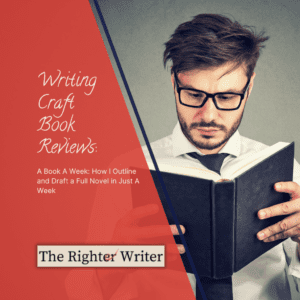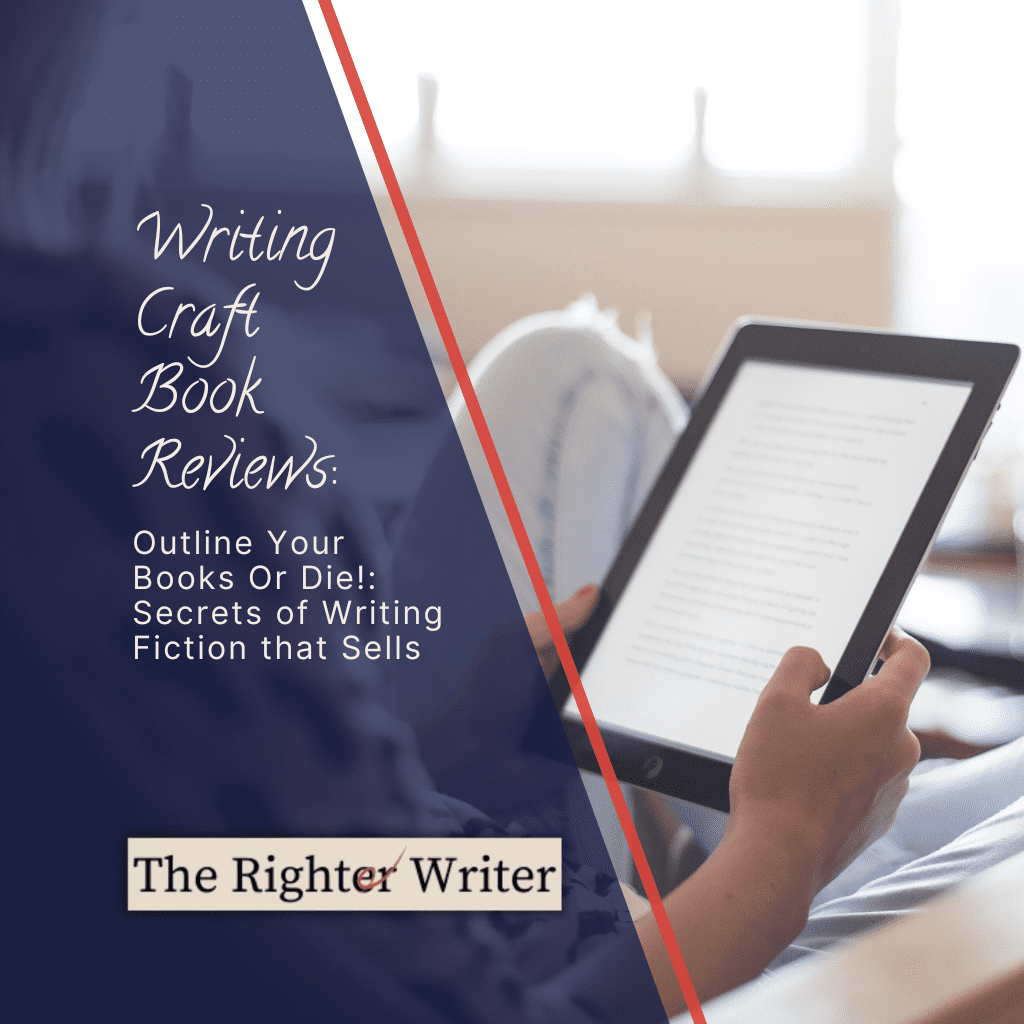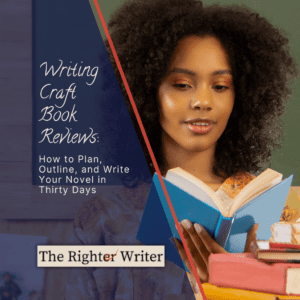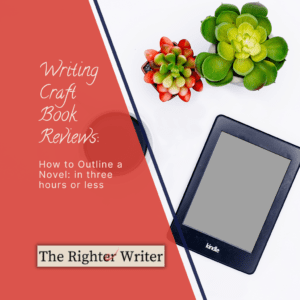
Writing Craft Book Reviews: A Book A Week
Fourth and last (for now!) in our series of book reviews featuring Kindle Unlimited books that explain ways to outline a novel. Let’s get ready for NaNoWriMo!
I'm an affiliate.
Some of the links on this page are affiliate links, but the opinions in my posts are my own, and I only mention products that I like and use myself. As an Amazon Associate, I earn from qualifying purchases. What that means is that if you click one of the links on my site and make a purchase, I might recieve compensation at no extra cost to you.

National Novel Writing Month is coming up in November, so this is “Preptober,” when authors plan out the novels that they are going to start next month.
A lot of authors create outlines before NaNoWriMo starts, so they can devote the entire month to writing and are more likely to succeed. There are a lot of books out there on how to outline a novel or story; it seems like every writer has their own way of doing things.
Books are expensive, though, and I can’t afford to buy every book about how to outline when most of them will not be what I’m looking for. Instead, I’ve been focusing on reading craft books that are available on Kindle Unlimited.
Do you read more than one paperback or two ebooks per month?
If you do, check out Kindle Unlimited.
I am a huge fan, because I read several novels and a couple of nonfiction books per week.
With KU, you can check out as many ebooks as you want for a monthly fee. It’s like a library with over a million books in it, both ebooks and some audiobooks, and it’s all yours. Well, ten books at a time are yours. Then, like in a library, return a book before you can check out another one.
On my Kindle reader, I can browse through the Kindle store and pick out paranormal romances, murder mysteries, science fiction action stories, or epic fantasy adventures—basically any genre I’m in the mood for. There are even graphic novels!
I like to look for books on Amazon on my computer; there’s a button that lets me sort by only KU books. My favorite feature, though, is the next-in-series feature. When I finish a book, the next book in the series pops up and I can download it to my device with one click!
If you don’t have Kindle Unlimited yet, this link will get you a free trial. I warn you though, it’s addictive!
The first novel-outlining book I read was Outline Your Books Or Die!: Secrets of Writing Fiction that Sells: Plotting, Authorship, Novel Outlining Techniques (How To Write Book 5) by Jim Driver.
I chose it because it came up on the first page of Amazon search results, and the name was silly.
It was originally printed in 2015 and updated in 2020, so it is fairly recent, too. I don’t really like using books from earlier than about 2007 as references, because the publishing industry has changed so much since then.
This is a quick, easy read. It took me about an hour to get through the entire thing.
The author, Jim Driver, lays out his process step by step, clearly and concisely, so it was easy to get the main ideas without having to read the book again and again.
The process that he uses for outlining is simple, and he explains it without a lot of writing jargon, so even novice writers will find it easy to follow.
In Driver’s words:
My method involves working through six distinct stages:
The author starts by explaining his technique for getting information on readers and overviews of popular books (steps one and two) from Amazon reviews.
Driver says that reader reviews “can be extremely useful to writers because they reveal what average readers think about the books they are reading.” Reading reviews of best-selling books can give you an idea of what types of characters, settings, and plots are popular.
According to Driver, reviews are such a great resource because readers who take the time to write reviews “can be classified as ‘super interested’ and these are the ones [he wants] to find out about.”
The third step is Ultimate Aims, which describes what the major characters want during the story, or their goals. Compared to other outlining methods I’ve studied, Driver spends a lot of time on the antagonist’s (aka the bad guy) motivations. “What motivates the antagonist will decide their ultimate aim” is how he phrases it, and he says that this step will make for more interesting three-dimensional antagonists.
This step affects the next step, Character Progression. Driver says that he calls this step progression instead of growth because “characters don’t always get better or more exciting during the course of the story,” sometimes they fall apart, instead.
Step five, The Premise, seemed the least useful to me. It sounded like Driver’s premise fulfilled the same purpose for him as a blurb does for me.
For me, the blurb helps me keep the point of the story in mind, so I don’t get distracted by subplots or details.
Driver’s last step, Character Outlines, does something similar. He says that the outlines help to “prevent inconsistencies creeping into your stories and to help you work out what makes each character tick.”
After giving his overview of each step in his process, Driver then explains how to fit each step into a cohesive outline.
Well, he calls it an outline, but to me, it looks more like a summary. He says it’s like “explaining the story to someone who has no idea who any of the characters or locations are.” So it has a lot more detail than I am used to putting into my outlines (mine are usually bullet points).
To create this summary, the author gives each scene in the main plot a name that explains what happens, puts them in order, and then adds the subplot scenes around the key scenes.
Then he groups the scenes into chapters and writes a chapter summary for each one.
It sounds like this part takes more time than any other section. Even Driver finds it difficult, but he says, “Whenever I find myself running out of steam, I find it helps to remind myself what it is each of the characters involved in a scene hopes to gain.”
The only bit of advice that I really disagreed with was that Driver suggests editing chapter by chapter, instead of all at once when the manuscript is finished.
I have two problems with this advice.
First, editing as you go makes it really easy to get obsessed with one chapter, so you edit and edit and edit, making no forward progress with the book. For this reason, I prefer to get the entire story out as fast as possible without worrying about spelling, grammar, or word choice. Then, I go back to edit everything afterward.
The second reason I don’t edit as I go along is that my mood affects my editing too much. If I had recently read about avoiding the passive voice, for instance, I would subconsciously focus on that during that day’s editing. If I didn’t edit out all the passive voice on other days, the style of the chapters wouldn’t match, and the novel would seem choppy and disjointed. By editing the entire manuscript at once, my prose is more consistent, and I know I haven’t missed anything along the way.
Overall, I gave the book five stars, because it is good at what it does.
This is a good book for someone just starting out or someone who has read about the more esoteric outlining systems and thought they were too confusing.
It is not for someone who wants to get deep into the philosophy of how storytelling works or wants to create a detailed beat sheet of their story.
Reading it isn’t a big time investment, so I recommend that authors check it out to see if there’s anything in it you can use.
After all, if you have Kindle Unlimited, it’s free to read, so the price is definitely right!


Fourth and last (for now!) in our series of book reviews featuring Kindle Unlimited books that explain ways to outline a novel. Let’s get ready for NaNoWriMo!

Third in our series of book reviews featuring Kindle Unlimited books that explain ways to outline a novel. Let’s get ready for NaNoWriMo!

Second in our series of book reviews featuring Kindle Unlimited books that explain ways to outline a novel. Let’s get ready for NaNoWriMo!
